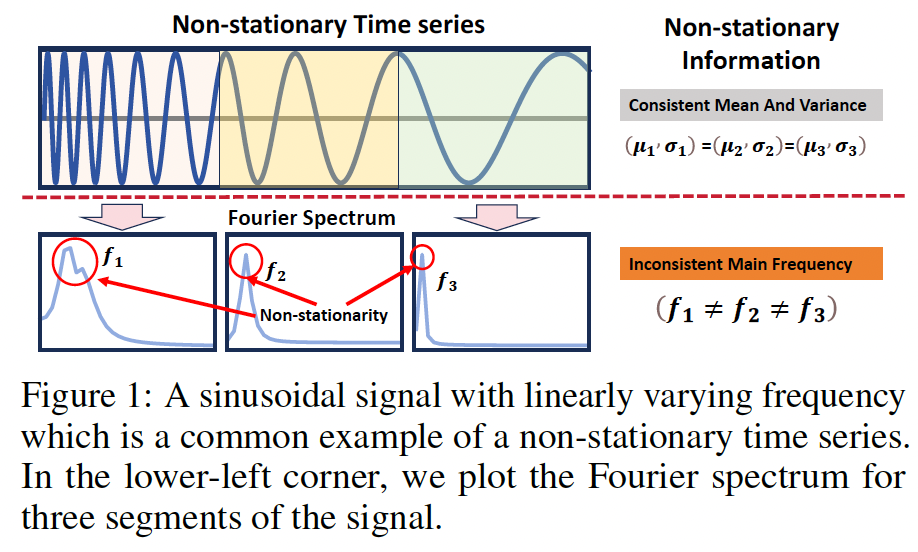MixLinear: Extereme Low Resource Multivaraite Time Series Forecasting with 0.1K Parameters

Contents
- Abstract
- Introduction
-
FAN
- Experiments
0. Abstract
MixLinear
- Ultra-lightweight MTS forecasting model
- Designed for resource-constrained devices.
- Effectively captures both
- (1) temporal domain
- (2) frequency domain
- How? By…
- (1) Modeling intra-segment and inter-segment variations
- (2) Extracting frequency variations
- from a low-dimensional latent space in the frequency domain.
1. Introduction
MixLinear
-
Highly lightweight MTS model
-
Efficiently captures the temporal and frequency features from both time and frequency domains.
- Time domain)
- Captures intra-segment and inter-segment variations
- By decoupling channel and periodic information from the trend components
- Breaking the trend information into smaller segments.
- Frequency domain)
-
By mapping the trend into a latent frequency space
& reconstructing the trend spectrum.
-
- Reduction in parameter: from $O\left(n^2\right)$ to $O(n)$
- for $L$-length inputs/outputs
- with a known period $w$
- subsequence length $n=\left\lceil\frac{L}{w}\right\rceil$.
2. MixLinear
(1) Overview
Key innovation of MixLinear
= Ability to extract features from both TIME & FREQ domains
( while minimizing the # of parameters )
However… combining time and frequency domain models
$\rightarrow$ Significantly increase the parameter scale!
MixLinear
(1) Time Domain Transformation
-
Existing linear models: Apply pointwise transformations
-
MixLinear: Captures inter-segment and intra-segment dependencies by splitting the trend into segments
$\rightarrow$ Significantly reduces the # paarams & enhances the locality
(2) Frequency Domain Transformation
-
Focuses on transforming more compact trend components in a lower-dim
$\rightarrow$ Reduces the model complexity
(2) Time Domain Transformation
Divides the trend components into smaller segments
Applies two linear transformations to capture
- (1) intra-segment dependencies
- (2) inter-segment dependencies.
$\rightarrow$ Significantly reduces the model complexity while enhancing the locality
Two main subprocesses:
- a) Trend Segmentation
- b) Segment Transformation
a) Trend Segmentation
TS: $X \in \mathbb{R}^L$ ( with the period $w$ )
Extract trend
- step 1) Aggregation
- Apply a 1D conv( kernel size of $w$ )
- Aggregate all the information within each period
- step 2) Downsampling
- Downsample the aggregated series by the period $w$
- Result: trend = $X_{\text {Trend }} \in \mathbb{R}^n$, where $n=\left\lceil\frac{L}{w}\right\rceil$.
$\rightarrow$ Effectively decouples the periodic and trend components
( + Zero padding to $X_{\text {Trend }}$ to make $\sqrt{n}$ to be an integer )
Split the trend components $X_{\text {Trend }} \in \mathbb{R}^n$
$\rightarrow$ Into smaller trend segments $X_{\text {Seg }} \in \mathbb{R}^{\sqrt{n}}$.
